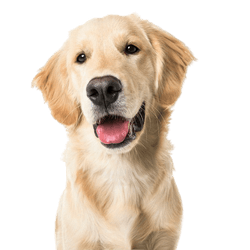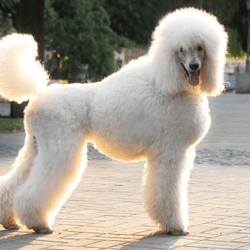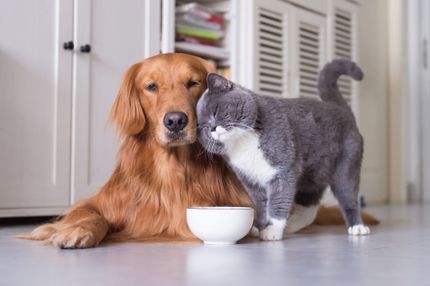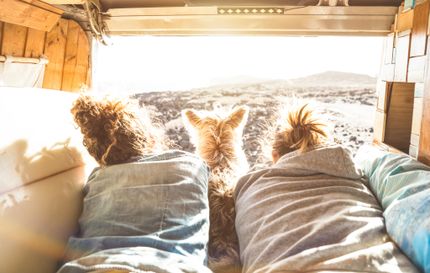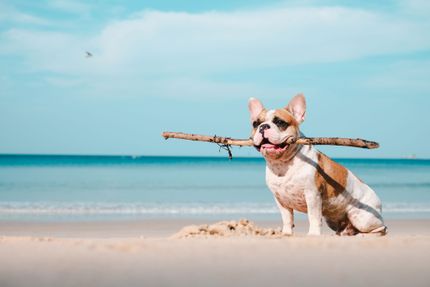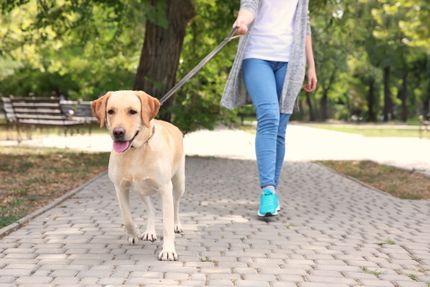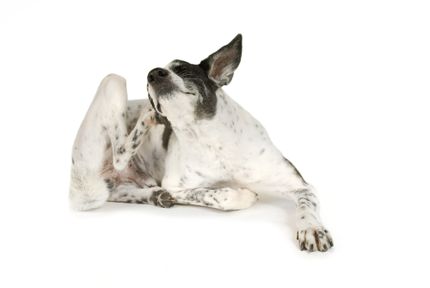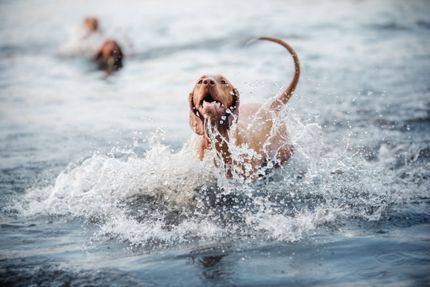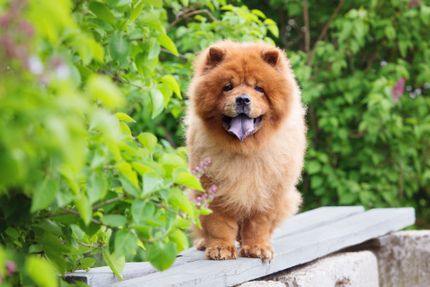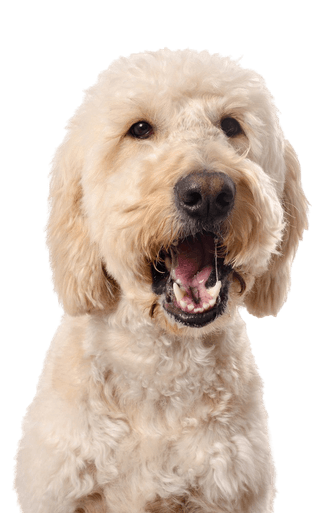
Goldendoodle:Golden Retriever and Poodle Mix
Goldendoodle
Facts & Origin
Origin and breed history of the Goldendoodle
Goldendoodle breeding was founded in the 1980s by the Australian Wally Conrons. His efforts were aimed at a human-friendly dog that should be a perfect guide and assistance dog. In addition to a few other breeds, he also crossed the golden retriever with poodles which resulted in the birth of the Goldendoodle. To date, this new breed is not officially recognised and is referred to as a so-called designer dog.
- Mix between poodle and golden retriever
- not FCI approved
The dog is particularly well known - not quite rightly - as a hypoallergenic dog, i.e. as a breed that is suitable for people that suffer from dog allergies, since it does not have much hair due to the crossbreed with the poodle. However, hypoallergenic breeds can only be described moderately as hypoallergenic since many people are allergic to the saliva of dogs and not to their hair.
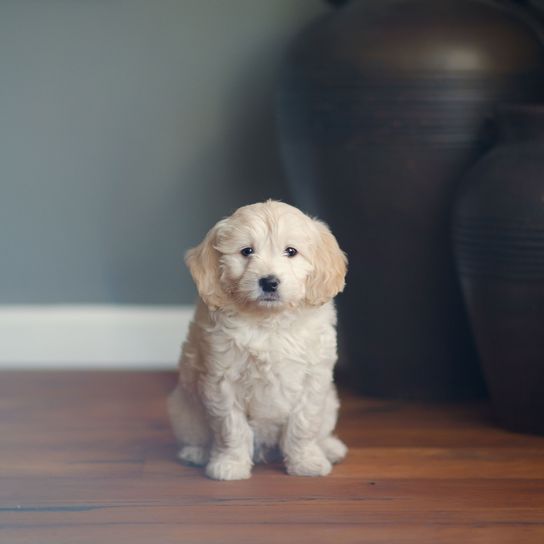
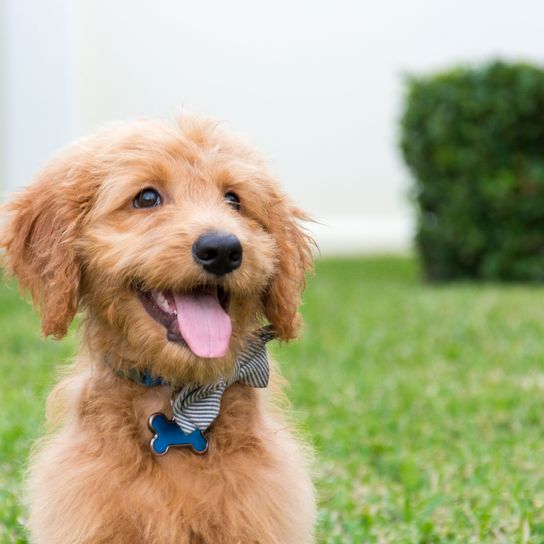
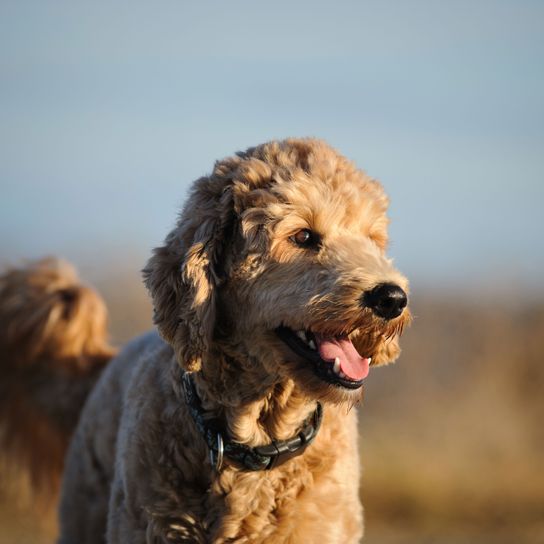
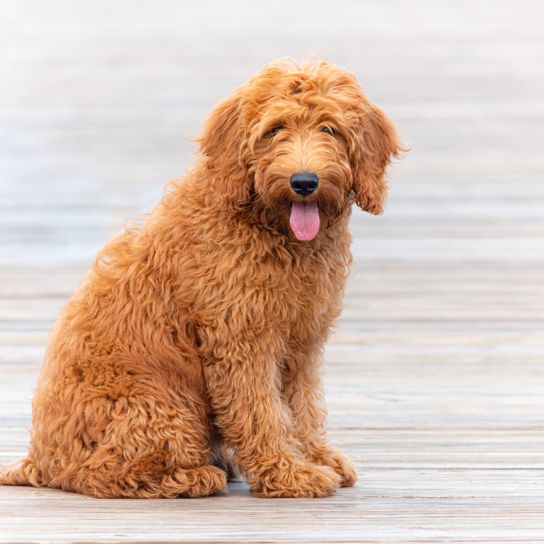
| Alternate Name | - |
| Origin | UK - Germany |
| Life expectancy | 10 - 15 years |
| Care requirements | high-maintenance |
| Activity level | average - high |
| FCI group | not recognised |
| AKC group | not recognised |
| KC group | not recognised |
More Golden Retriever mixes
More Poodle mixes
Attitude, character and temperament of the breed
Character traits of the Goldendoodle and its nature
In a Goldendoodle you will find an extremely docile and active companion. Thanks to the optimal mix of retriever and poodle, the Goldendoodle has a balanced and very human-friendly disposition. It can usually be kept in a household with small children and other animals without any problems.
When sufficiently challenged in a sensible and intelligent way, they do not tend to misbehave.
- people friendly
- suitable for children
- needs to be given sufficient exercise
Training and keeping
When owning a Goldendoodle puppy you should attend puppy school right from the beginning to get it used to critical situations and requirements within the first six months of their life. This dog learns unusually quick and should always be sufficiently encouraged throughout its further development. If you keep a Goldendoodle in the house, you have to pay attention to structure and clear guidance. Only then will this dog feel safe in your company and become a loyal and reliable partner in any situation.
In addition to long walks, this great breed also enjoys retrieving games, agility, dog dancing or tracking.
Character
Usage
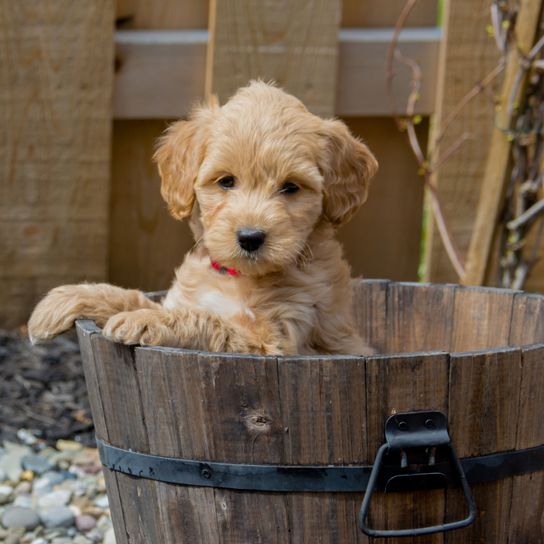
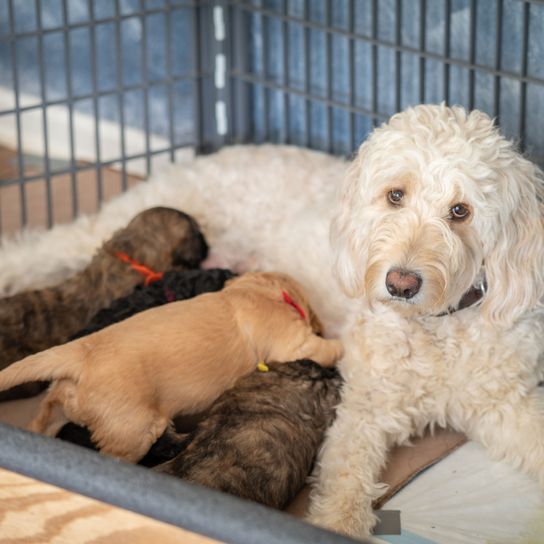
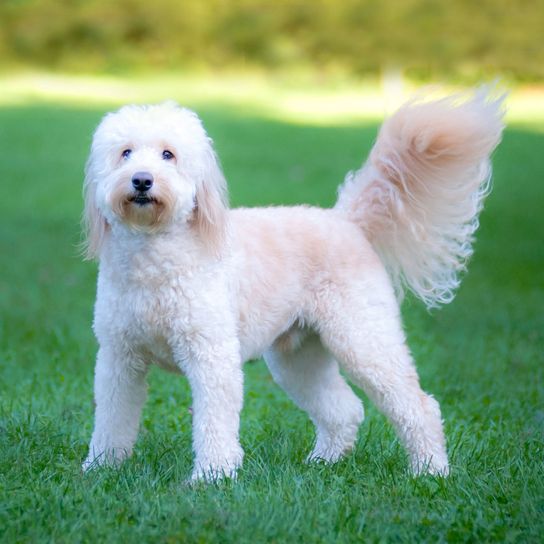

Health and breeding information
Care, health and life expectancy of a Goldendoodle
The Goldendoodle is considered to be very easy to maintain. If you have a dog that is more like a poodle, you will most likely need to have their fur trimmed regularly. The poodle doesn't change hair as intensely as other dog breeds. Nevertheless, dead hair and possibly deeper sitting dirt must be removed from time to time.
For the time in between, it is sufficient to brush your dog regularly. Goldendoodles love the water and are happy to be persuaded to take a bath.
Other than that, preventive health care, vaccinations and regular dental check apply as with all other dog breeds.
The Goldendoodle is considered extremely robust and durable. He can easily reach an age of up to 15 years. Hereditary diseases have not yet occurred in Goldendoodle breeding.
Nutrition
Regular wet and dry food for medium-sized and active dogs is ideal for this dog breed. Goldendoodle puppies, older or sick dogs have a special need for nutrients and energy. The feeding should then be adjusted accordingly.
Buying a Goldendoodle
You can get a Goldendoodle puppy from the breeder. Goldendoodle are not cheap dogs and can cost up to 2000 euros. But if you want a healthy dog that also corresponds characteristically to the ideas of the breed, you should also look for a reputable breeder. Prices start at 1200 euros for a Goldendoodle in standard colours. With a little luck, instead of buying a Goldendoodle, you can also find a lonely and grateful dog in animal welfare. For a fair fee, you get a great dog who already has some experience.


Appearance of the Goldendoodle
The external appearance varies considerably depending on the proportion of parent animals. In some types, the retriever prevails more, others look more like poodles. The average size lies between 50 and 70 cm measured at the withers. The weight of the Goldendoodle lies between 20 and 40 kilograms. The colour drawings range from cream-yellow to various dark brown tones to black or piebald animals. The more poodle-like Goldendoodle hardly has any hair and is considered extremely allergy-friendly.
- resembles the poodle or the retriever
- Size 50 to 70 cm
- Weight 20 to 40 kg
- colorful colors
| Fur length | medium |
| Fur | wavy - curly |
| Ear shape | Triangle - Floppy Ear |
| Tail | fanned out - lang |
| Anatomy | rugged |
| Size ♀ | 56 - 59 cm |
| Weight ♀ | 20 - 40 kg |
| Size ♂ | 61 - 66 cm |
| Weight ♂ | 20 - 40 kg |
| Suitable For | suitable for allergy sufferers, Beginner, Blind people, Children, Seniors |
Colors

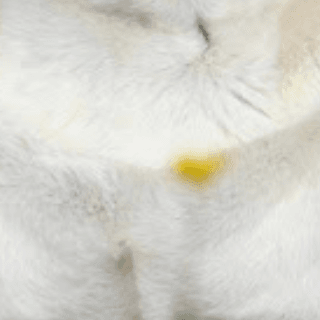
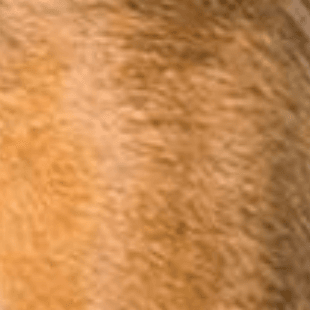



Known Diseases
Elbow dysplasia (ED)
Elbow joint dysplasia is a chronic disease complex of the elbow joint of fast growing dog breeds.
Epilepsy
Definition: Dog has epilepsy if, for example, at least two epileptic seizures occur more than 24 hours apart.
Hip dysplasia (HD)
The hip dysplasia or hip joint dysplasia of the dog (HD) is a maldevelopment of the hip joint.
Cataract
Cataracts are still one of the most common causes of blindness, even in dogs.
Progressive Retinal Atrophy (PRA)
Progressive retinal atrophy (PRA) is a slowly progressive death of the retina in dogs.
Eye diseases
Often occur with allergies and intolerances.
Patellar problems
Problems with the Patellar can be a displacement or weak kneecap, which is one of the most common causes of lameness in dogs, also because of overweight.
FAQ
-
A Goldendoodle is a special hybrid mixture of Poodle and Golden Retriever and costs up to 3500 Euro. Cheap puppies cost from 2000 euros. The breed is not recognized and therefore the prices are very different and do not correspond to any guideline.
-
This is not a very easy question to answer. Both breeds are hybrid breeds and mixed with a poodle. The Goldendoodle is an additional 50% Golden Retriever and the Labradoodle is a Labrador Retriever mix. Both breeds are great family breeds. However, you should look at the characteristics of the Golden Retriever compared to the Labrador and then decide which one appeals to you more.
-
On average, a Goldendoodle will live 10-15 years. It depends on the health and diet, and exercise, and the gene pool.
-
Yes, the Goldendoodle is a great family dog.
-
A Goldie mix needs average exercise. About 2-3 hours a day of physical exercise in the form of running and walking are good for the big dog. At home he needs additional mental exercise and intelligence toys. He is suitable as a working dog and can therefore be used as a therapy dog or in rescue and police own.
-
High quality food with a high meat content is particularly suitable. Wet food or barf is best. We have for example RINTI as a recommendation. (AMZ Link) This is available in size L (800 gram cans) and consists of over 65% goat meat and is grain-free, contains minerals and drinking water. The size of the can is sufficient for an approx. 18kg Goldendoodle.
Sources and relevant links
Gabriele Lehari (2004). Ulmers Großes Lexikon der Hunderassen. Ulmer.
Stacy Brusseau (2009). The Goldendoodle. AuthorHouse.
Zooplus.de
Accessed on 16.01.2023
Susanne Saben (2017). Goldendoodle: Goldendoodles Owners Bible. DYM Worldwide Publishers.
Embark
Accessed on 24.01.2023
Useful Articles
You can find articles that might interest you in the dogbible blog to match your favorite breed.
Visit our magazineto stay up to date on dog trends.
To find out more, view our Privacy Policy
Find here the breed that suits you and find out what character traits it has. Here you can also learn more about the origin, size and weight of your favorite breeds.
Matching your favorite breed, you'll find articles that might interest you on the dogbible dog blog.
Dog ran away - what to do if the dog is gone?
Deworming dog - Worming procedure
Tick Spot on Protection for Dogs: Frontline - is it good?
Second dog: This is what you have to consider when introducing each other
